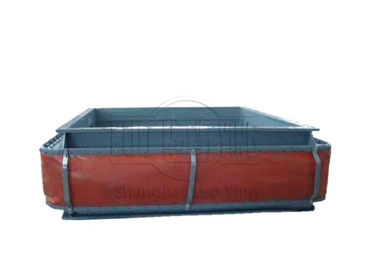Selection of materials for non-metallic expansion joints.
Oct-23-21
Selection of materials for non-metallic expansion joints.Non-metallic expansion joints are critical components in various industries, including power plants, chemical plants, and process industries. They play a crucial role in accommodating thermal expansion, vibration, and movement of piping systems, ensuring the system's integrity and longevity. Selecting the right materials for non-metallic expansion joints is essential to ensure their reliability and effective performance. This article will discuss the factors to consider when choosing materials for non-metallic expansion joints.
Temperature Resistance: One of the primary considerations for selecting non-metallic expansion joint materials is their temperature resistance. The materials should be capable of withstanding the maximum and minimum temperatures that the expansion joint will encounter during operation. Factors such as the temperature range, duration of exposure, and frequency of temperature fluctuations need to be evaluated. Common temperature-resistant materials include EPDM (Ethylene Propylene Diene Terpolymer), silicone, fluorocarbon (Viton), and PTFE (Polytetrafluoroethylene).
Chemical Compatibility: Non-metallic expansion joints often come into contact with a wide range of chemicals, including acids, alkalis, solvents, and oils. It is crucial to select materials that are chemically compatible with the substances the expansion joint will come into contact with. Failure to consider chemical compatibility can result in material degradation, premature failure, and safety hazards. Assessing factors such as the concentration, temperature, and duration of exposure to chemicals will help determine the suitable material. Common chemically resistant materials include PTFE, EPDM, Nitrile (Buna-N), and Neoprene.
Pressure Rating: The non-metallic expansion joint materials should be capable of withstanding the pressure conditions in the piping system. The pressure rating of the expansion joint should correspond to the system's maximum pressure, including pressure surges and fluctuations. The material should have sufficient strength and resilience to maintain its integrity without undergoing excessive deformation or failure. Materials like EPDM, Neoprene, and PTFE exhibit good pressure resistance properties.

UV and Weather Resistance: In some applications, non-metallic expansion joints may be exposed to outdoor environments, including sunlight, rain, and extreme temperatures. UV and weather-resistant materials are vital to prevent premature aging, degradation, and loss of mechanical properties. Elastomeric materials like EPDM and silicone exhibit excellent resistance to UV radiation and weathering.
Fire Resistance: In certain industries and applications, fire resistance is a critical requirement for non-metallic expansion joints. Fire-resistant materials should be selected to ensure their performance during a fire event and prevent the spread of flames. Materials like silicone, EPDM, and fluorocarbon are commonly used due to their inherent fire-resistant properties.
FDA and NSF Compliance: In industries where non-metallic expansion joints are used in food processing, pharmaceuticals, and potable water applications, compliance with FDA (Food and Drug Administration) and NSF (National Sanitation Foundation) regulations is essential. Selecting materials that meet these standards ensures the safety and suitability of the expansion joints for these applications. Materials such as EPDM, silicone, and PTFE are often compliant with FDA and NSF regulations.
In conclusion, the selection of materials for non-metallic expansion joints involves a comprehensive assessment of factors such as temperature resistance, chemical compatibility, pressure rating, flexibility, UV/weather resistance, fire resistance, and regulatory compliance. It is crucial to collaborate with experienced engineers and manufacturers to ensure the optimal material selection based on the specific application requirements.

